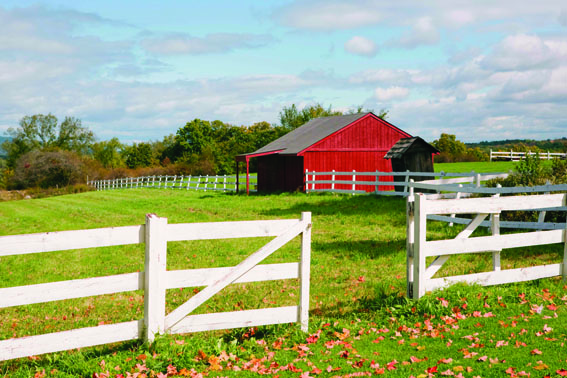 When purchasing property, buyers are usually more concerned about easements that cross or burden the property they are considering, than they are about the nature and scope of the benefitting easement that allows them to access their target property. When the time comes for closing, the closer shows the buyer a map and the part of a title report that shows the easements that cross the property (and other clouds on the title), but unless there is some type of maintenance agreement, the easement that serves the subject property (and allows access) will usually not appear on the title report! It takes extra research to pull those documents and read the full content and description of the easement.
When purchasing property, buyers are usually more concerned about easements that cross or burden the property they are considering, than they are about the nature and scope of the benefitting easement that allows them to access their target property. When the time comes for closing, the closer shows the buyer a map and the part of a title report that shows the easements that cross the property (and other clouds on the title), but unless there is some type of maintenance agreement, the easement that serves the subject property (and allows access) will usually not appear on the title report! It takes extra research to pull those documents and read the full content and description of the easement.
The following are some considerations to consider when checking out an easement document; 1) Is the legal description of the benefitted property and the burdened property AND the exact location of the easement clear and accurate? 2) Does the language specify that it is an appurtenant easement that runs with the land and not just for an individual entity? Just because it runs with the land does not mean that it is perpetual in nature, unless specified. It should be irrevocable, perpetual and transferable. 3) Is the use specifically defined, such as being designated for ingress, egress and utilities, or other language that clearly defines the purpose and scope of the easement? Is the use intended for a single residence or more expanded uses (future subdivision, guests, contractors etc.)? 4) Does it specify construction type and repair or maintenance issues? 5) Does it talk about controls, such as gates, speed bumps and parallel fencing, use of ORV’s or ATV’s, use and damage by heavy commercial truck traffic?
In a recent case a property owner installed a couple of gates on their property at certain points along an easement road that also served as a driveway for an adjoining property owner. He did this in order to keep out unintended users who had been crossing the property illegally to access adjoining state land for recreational purposes. The homeowner of the benefited property became very distraught about the fact that they would now have to open and close gates in order to access their property on a daily basis. They were disappointed to discover that the servient property owner had the right to install the gates as long as the benefitted property owner could still access their property.
.jpg)
Jim Palmer, Jr.
509-953-1666
www.JimPalmerJr.com

See my blogs at:
www.RealEstateMarketPlc.com
Two Multiple Listing Services
Professional Representation for Buyers & Sellers
Residential • Acreage • Residential Acreage
Waterfront • Ranch • Farm
© Copyright 2025 | All rights reserved | Privacy Policy
"We do not share any client data with third parties. Your personal information is kept confidential and is not disclosed to any outside organizations except as required by law or with your explicit consent."
